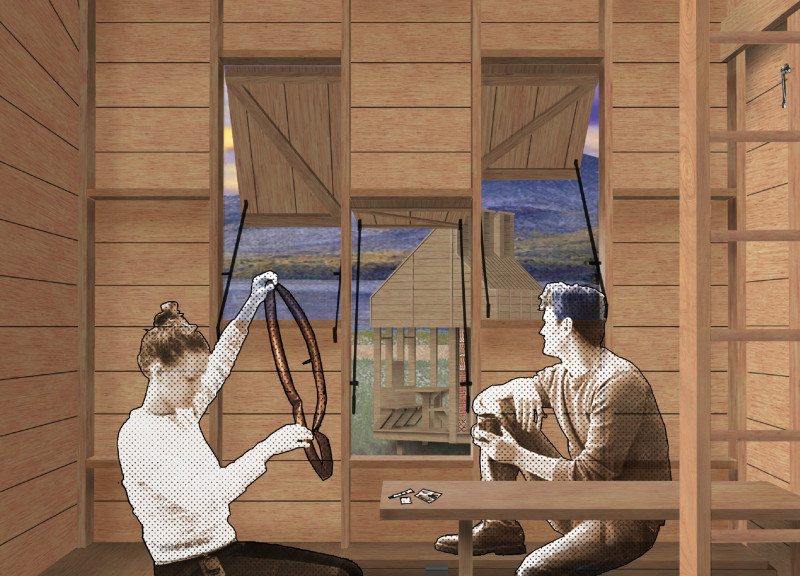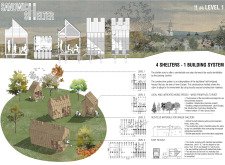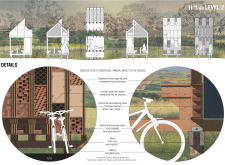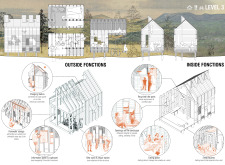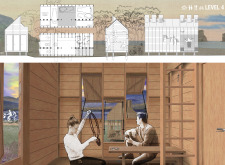5 key facts about this project
The project focuses on a modular shelter system designed for cyclists, serving as a functional rest stop. Located in areas frequented by outdoor enthusiasts, it reflects an approach that combines utility and local architectural traditions. Drawing inspiration from half-timbered houses, the design integrates into the landscape while providing essential amenities for users.
Modular Configuration
The shelter has a modular layout consisting of four levels. Levels 1 and 2 can be transported as a single unit, while Levels 3 and 4 are designed to be moved in two and three separate parts, respectively. This design makes it practical for deployment in different settings and allows for quick assembly.
User-Centered Spaces
Inside, the layout focuses on meeting the needs of cyclists. The shelter includes a dedicated bike repair station equipped with tools, an eating area with a folding table, and a sleeping space featuring a bench that can convert into a bed. Each space is thoughtfully planned to ensure that users find everything they need without unnecessary complications.
Sustainable Features
Sustainability is important in this design, shown through the use of a rainwater management system that collects water for non-drinkable uses like taps and toilets. This system helps save resources and makes the shelter more independent. Additionally, a charging station powered by solar panels or local electricity facilitates the needs of modern cyclists who rely on their devices.
Material Use
Local and untreated wood species are used throughout the structure, emphasizing sustainability and minimizing environmental impact. The foundation is supported by Robinia piles, known for their durability. The cladding and framework employ larch, Douglas fir, oak, chestnut, Scots pine, and maritime pine to ensure reliability. The fill for the half-timbering consists of recycled materials such as bricks, stones, and tiles which add distinctive character to each shelter.
Strategically placed openings provide views of the surroundings, creating a connection between the shelter and the landscape. These design elements enhance the usability of the space and invite interaction, catering to diverse users while respecting the natural environment.


